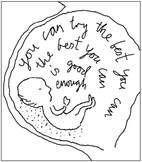
I can't imagine anyone reading this blog could put hand on heart and claim to be completely innocent of contravening the laws governing intellectual property. How many of us can say with any confidence that they actually understand what the rules are anyway? What percentage of the material on this website is unlawful? Am I at risk of being dragged off to the United States like Mr Dotcom, the founder of the now deceased Megaupload?
The rise of an entity such as Megaupload must make the publishing industry look back longingly to the lost innocence of the analogue age. Yet even those more tranquil times were plagued by dastardly pirates. As a young boy I spent many hours recording my brother's LPs onto audio cassettes. Occasionally I would come across the dire warning that "home taping is killing music". This struck me as absurd then. It sounds even more contemptible today.
Nevertheless, copyright has always been a deeply contentious issue. A recent case reported in The Art Newspaper captures this perfectly. A British judge has apparently ruled that a photograph used on packs of a certain brand of delicious tea has broken the law. The guilty illustration shows a red London bus driving harmlessly across Westminster Bridge with a desaturated black and white image of the Houses of Parliament in the background. This is similar yet really very different to an existing photograph that uses the same sort of effect.
The Art Newspaper has been quick to criticise this judgement "for moving into the realm of protecting ideas, rather than the expression of ideas" and fears that "[t]he ruling could have serious implications for artists who reproduce parts of other photographs."(1)

*
Meanwhile, The Wall Street Journal reports on the popularity of Pinterest, a resource that allows its nearly 18 million users to "pin" web images to their own virtual scrapbook. This, as the newspaper rightly points out, is a legal minefield.
The newspaper characterises how Pinterest works as follows:
Each subscriber [to Pinterest] curates a board or boards of photos, and then other users can
click on the links to the original source and choose to re-pin the image on boards of their own.(3)
This has very strong echoes of John Berger's Ways of Seeing, in particular Berger's thoughts on children and adults "curating" museum postcards on a bedroom or office wall.(4) Berger argued provocatively and persuasively that, "[l]ogically, these boards should replace museums"(5).
And so, forty years after the publication of Ways of Seeing, technology now allows Berger's vision to become a reality.
Let's just hope that none of the resulting collages of "curated" collections feature iconic red objects set prominently against a familiar black-and-white background. Otherwise the copyright cops will be kicking down bedroom doors in search of seditious scrapbooks, curatorial criminals and the occasional tea leaf.(6)
More tea, Stewie?
____
Notes
(1) Anny Shaw, "Landmark ruling to be challenged: Why a British judge decided that an image of a bus on Westminster Bridge infringed copyright", The Art Newspaper, Issue 233, 14 March 2012, accessed 18/03/2012 at, http://www.theartnewspaper.com/articles/-Landmark-ruling-to-be-challenged/25891.
(2) Family Guy, "Ocean's Three and a Half", season 7, episode 7, first broadcast 15 February 2009. See http://familyguy.wikia.com/wiki/Ocean%27s_Three_and_a_Half, accessed 18/03/2012.
(3) Therese Poletti, "Is Pinterest Like Napster on Copyrights?", The Wall Street Journal, 15 March 2012, p. 19.
(4) See Emily McEwan's synopsis of Berger's Ways of Seeing at, http://emilymay.wordpress.com/research-papers/john-bergers-ways-of-seeing/, accessed 18/03/2012.
(5) John Berger, Ways of Seeing, BBC & Penguin, 1972/2008, p. 30.
(6) With this in mind, Sweden's Moderna Museet ought to watch out when it comes to its black, white and red photography collection. See Stuart Burch, "Seeing red", 25/09/2011, accessed 18/03/2012 at, http://www.stuartburch.com/1/post/2011/09/seeing-red.html.






